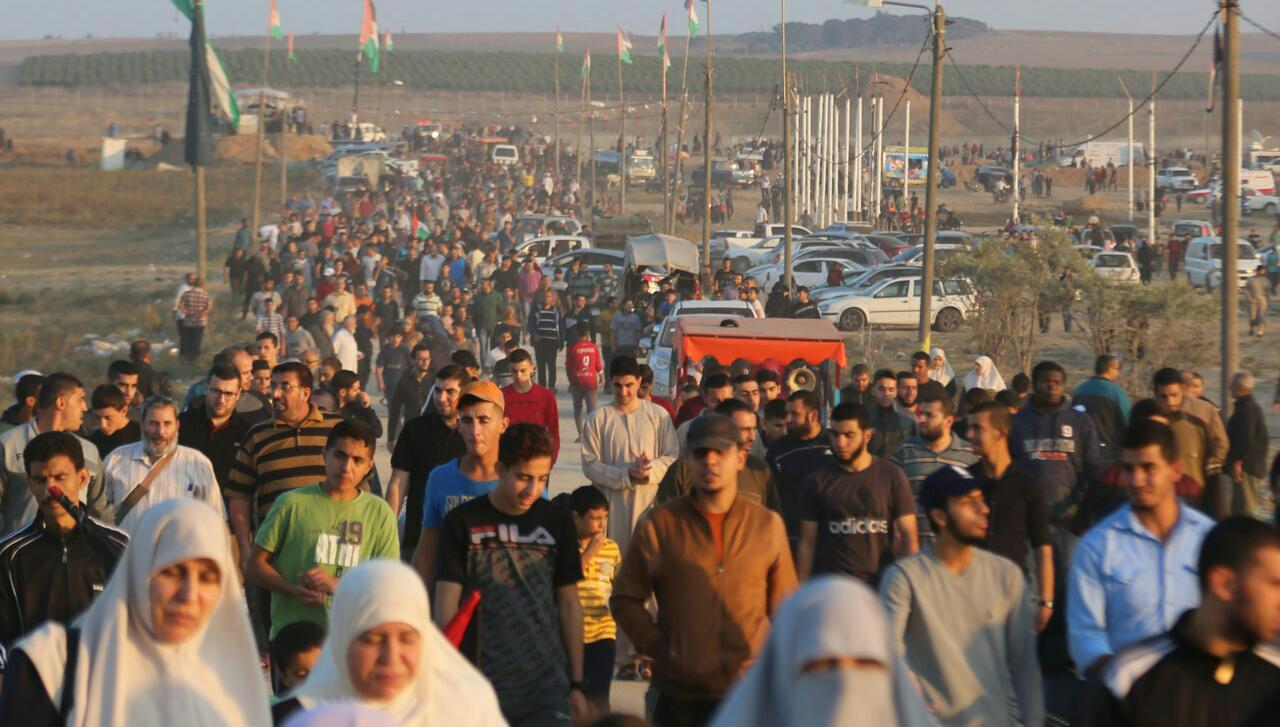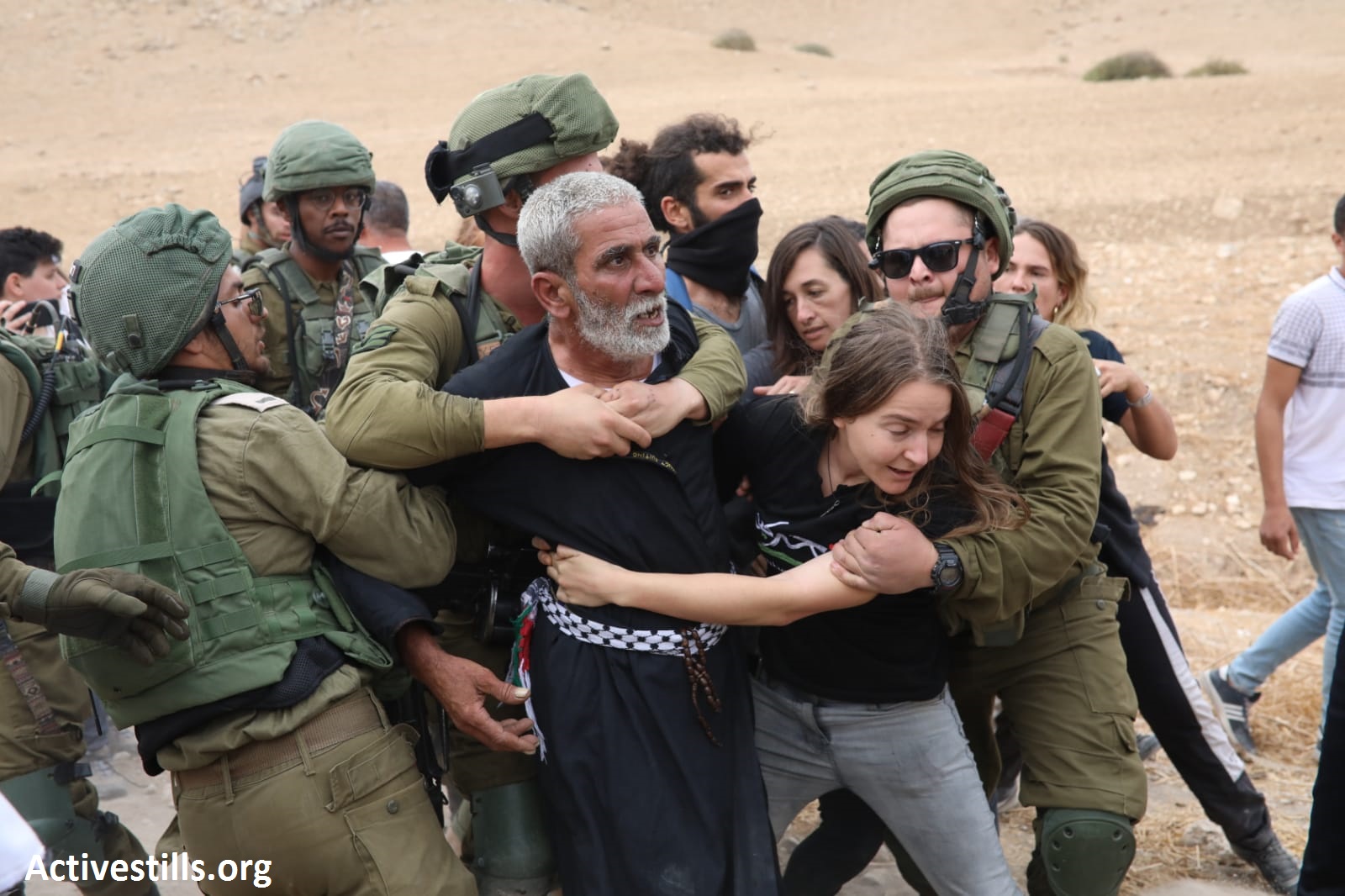Tag: Israel
-
Mosques, churches, protests: Gaza on the Balfour Declaration’s 102nd anniversary
On the 102nd anniversary of the Balfour Declaration, churches rang bells and mosques called for prayer at the same time, while tens of thousands of Palestinians entered the buffer zone this Friday between the besieged Gaza Strip and Israel in the massive weekly Great March of Return protest.
-
20 arrested as activists raise Palestinian flag in settlement
Over a hundred Palestinian and international activists entered an illegal Israeli settlement and raised the Palestinian flag on Saturday, October 26. Settlers and Israeli Occupation Forces responded violently to the peaceful protest, firing tear gas and flash grenades and arresting at least 20 people, including nine internationals and seven journalists.
-
Call to Action: Join London protest against Israeli demolition ‘charity’ Regavim
On September 1st, UK Lawyers for Israel is hosting a talk by Regavim, a pro-settler NGO with charitable status, pivotal in speeding up demolitions of Palestinian homes across the West Bank and displacement of Bedouin villages in the Negev. What is Regavim? Regavim, ‘dedicated to the preservation of Israel’s land’, petitions courts to demolish homes…



